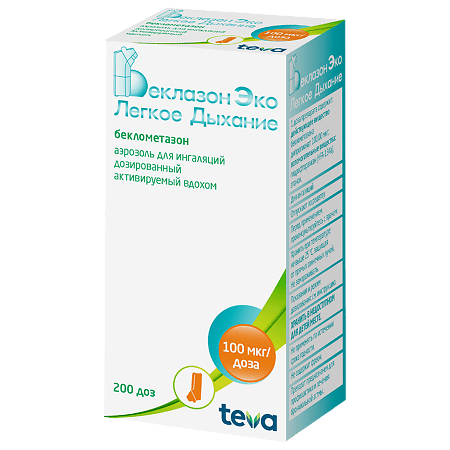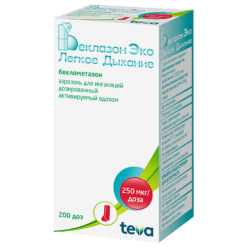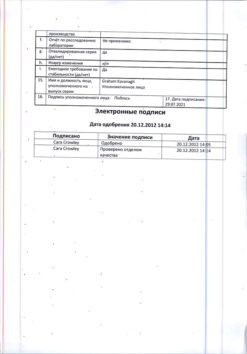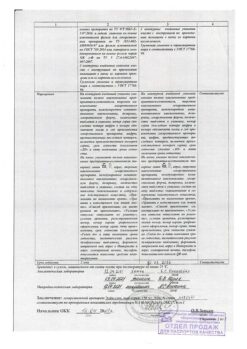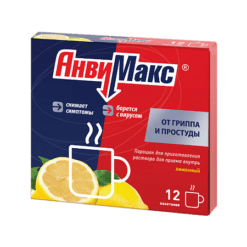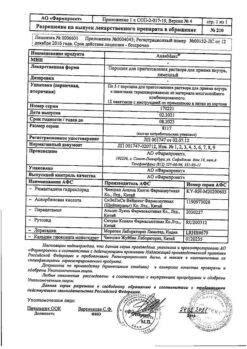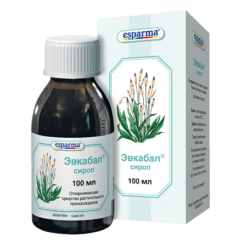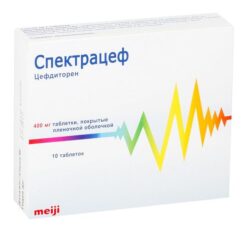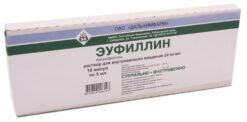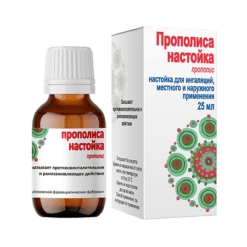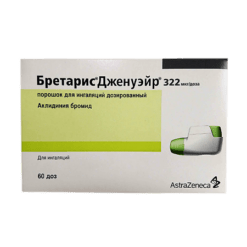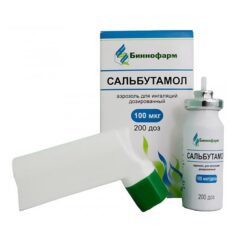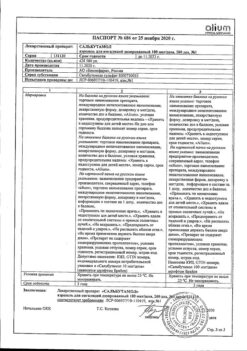No products in the cart.
Beclazon Eco Easy Breath, aerosol 100 mcg/dose 200 doses
€10.32 €7.87
Description
Pharmacotherapeutic group: glucocorticosteroid (GCS) for topical use
ATX code: R03BA01
Pharmacological properties
Pharmacodynamics<
Beclomethasone dipropionate is a prodrug and has weak tropicity to GCS receptors. Under the action of esterases it is converted into the active metabolite – beclomethasone-17-monopropionate (B-17-MP), which has a pronounced local anti-inflammatory effect. It reduces inflammation by reducing the formation of chemotaxis substance (effect on “late” allergy reactions), inhibits the development of an “immediate” allergic reaction (due to inhibition of production of arachidonic acid metabolites and reduction of release of inflammatory mediators from mast cells) and improves mucociliary transport. Beclomethasone reduces the number of mast cells in the bronchial mucosa, decreases epithelial edema, mucus secretion by bronchial glands, bronchial hyperresponsiveness, marginal accumulation of neutrophils, inflammatory exudate and lymphokine production, inhibits macrophage migration, reduces the intensity of infiltration and granulation. It increases the number of active beta-adrenoreceptors, restores the patient’s response to bronchodilators, allows reducing the frequency of their use. It practically has no resorptive effect after inhalation administration.
It does not relieve bronchospasm; the therapeutic effect develops gradually, usually after 5-7 days of course use of beclomethasone dipropionate.
Pharmacokinetics
Absorption. Up to 56% of the inhaled dose is deposited in the lower respiratory tract; the remaining amount is deposited in the mouth, pharynx, and swallowed. In the lungs, beclomethasone dipropionate is extensively metabolized to the active metabolite B-17-MP prior to absorption. Systemic absorption of B-17-MP occurs in the lungs (36% of the pulmonary fraction) and in the gastrointestinal tract (26% of the ingested dose). The absolute bioavailability of unchanged beclomethasone dipropionate and B-17-MP is approximately 2% and 62% of the inhaled dose, respectively. Beclomethasone dipropionate is rapidly absorbed; time to reach maximum plasma concentration (Tmax) is 0.3 h. B-17-MP is absorbed more slowly, Tmax is 1 h. There is an approximately linear relationship between the increase in inhaled dose and systemic exposure to the drug.
Distribution. Tissue distribution is 20 L for beclomethasone dipropionate and 424 L for B-17-MP. The binding to plasma proteins is relatively high at 87%.
Elimination. Beclomethasone dipropionate and B-17-MP have high plasma clearance (150 l/h and 120 l/h, respectively). The elimination half-life is 0.5 h and 2.7 h, respectively.
Indications
Indications
Basic therapy for various forms of bronchial asthma in adults and children over 4 years of age.
Pharmacological effect
Pharmacological effect
Pharmacotherapeutic group: glucocorticosteroid (GCS) for local use
ATX code: R03BA01
Pharmacological properties
Pharmacodynamics
Beclomethasone dipropionate is a prodrug and has weak affinity for GCS receptors. Under the influence of esterases, it is converted into an active metabolite – beclomethasone-17-monopropionate (B-17-MP), which has a pronounced local anti-inflammatory effect. Reduces inflammation by reducing the formation of a chemotaxis substance (impact on “late” allergic reactions), inhibits the development of an “immediate” allergic reaction (due to inhibition of the production of arachidonic acid metabolites and a decrease in the release of inflammatory mediators from mast cells) and improves mucociliary transport. Under the influence of beclomethasone, the number of mast cells in the bronchial mucosa decreases, epithelial edema, mucus secretion by bronchial glands, bronchial hyperreactivity, marginal accumulation of neutrophils, inflammatory exudate and the production of lymphokines are reduced, the migration of macrophages is inhibited, and the intensity of infiltration and granulation processes is reduced. Increases the number of active beta-adrenergic receptors, restores the patient’s response to bronchodilators, and allows to reduce the frequency of their use. It has virtually no resorptive effect after inhalation administration.
It does not relieve bronchospasm; the therapeutic effect develops gradually, usually after 5-7 days of course use of beclomethasone dipropionate.
Pharmacokinetics
Absorption. Up to 56% of the dose of the inhaled drug is deposited in the lower respiratory tract; the remaining amount settles in the mouth, pharynx and is swallowed. In the lungs, before absorption of beclomethasone, dipropionate is intensively metabolized to the active metabolite B-17-MP. Systemic absorption of B-17-MP occurs in the lungs (36% of the pulmonary fraction) and in the gastrointestinal tract (26% of the ingested dose). The absolute bioavailability of unchanged beclomethasone dipropionate and B-17-MP is approximately 2% and 62% of the inhalation dose, respectively. Beclomethasone dipropionate is rapidly absorbed, the time to reach maximum plasma concentration (Tmax) is 0.3 hours. B-17-MP is absorbed more slowly, Tmax is 1 hour. There is an approximately linear relationship between increasing the inhaled dose and systemic exposure of the drug.
Distribution. Distribution in tissues is 20 l for beclomethasone dipropionate and 424 l for B-17-MP. The connection with blood plasma proteins is relatively high – 87%.
Elimination. Beclomethasone dipropionate and B-17-MP have high plasma clearance (150 l/h and 120 l/h, respectively). The half-life is 0.5 hours and 2.7 hours, respectively.
Special instructions
Special instructions
Before prescribing inhaled drugs, it is necessary to instruct the patient on the rules for their use, ensuring the most complete delivery of the drug to the desired areas of the lungs. The development of oral candidiasis is most likely in patients with high levels of precipitating antibodies in the blood against the Candida fungus, which indicates a previous fungal infection. After inhalation, you should rinse your mouth and throat with water. To treat candidiasis, topical antifungal drugs can be used while continuing therapy with Beclazone Eco Easy Breathing.
If patients take GCS orally, then Beclazon Eco Easy Breathing is prescribed while taking the previous dose of GCS, and the patients should be in a relatively stable condition. After about 1-2 weeks, the daily dose of oral corticosteroids begins to be gradually reduced. The dose reduction scheme depends on the duration of previous therapy and the size of the initial dose of GCS. Regular use of inhaled corticosteroids allows in most cases to cancel oral corticosteroids (patients requiring no more than 15 mg of prednisolone can be completely transferred to inhaled therapy), while in the first months after the transition the patient’s condition should be carefully monitored until his pituitary-adrenal system has recovered sufficiently to ensure an adequate response to stressful situations (for example, injury, surgery or infection).
When transferring patients from taking systemic corticosteroids to inhalation therapy, allergic reactions (for example, allergic rhinitis, eczema) that were previously suppressed by systemic drugs may occur.
Patients with reduced adrenal cortex function who are transferred to inhalation treatment should have a supply of GCS and always carry a warning card with them, which should indicate that in stressful situations they need additional systemic administration of GCS (after eliminating the stressful situation, the dose of GCS can be reduced again). A sudden and progressive worsening of asthma symptoms is a potentially dangerous condition, often life-threatening for patients, and requires an increase in the dose of GCS. An indirect indicator of the ineffectiveness of therapy is the more frequent use of short-acting b-2-agonists than before.
Beclazon Eco Easy Breathing is not intended for relieving attacks, but for regular daily use. To relieve attacks, short-acting b-2-agonists (for example, salbutamol) are used. In case of severe exacerbation of bronchial asthma or insufficient effectiveness of the therapy, the dose of Beclazone Eco Easy Breathing should be increased and, if necessary, a systemic corticosteroid and/or an antibiotic should be prescribed if the infection develops.
If paradoxical bronchospasm develops, you should immediately stop using Beclazone Eco Easy Breathing, assess the patient’s condition, conduct an examination and, if necessary, prescribe therapy with other drugs. With long-term use of any inhaled corticosteroids, especially in high doses, systemic effects may be observed (see “Side effects”), but the likelihood of their development is much lower than when taking corticosteroids orally. Therefore, it is especially important that when a therapeutic effect is achieved, the dose of inhaled corticosteroids is reduced to the minimum effective dose that controls the course of the disease. At a dose of 1500 mcg/day, the drug does not cause significant suppression of adrenal function in most patients. Due to possible adrenal insufficiency, special care should be taken and regular monitoring of adrenal function indicators when transferring patients taking GCS orally to treatment with Beclazone Eco Easy Breathing.
It is recommended to regularly monitor the growth dynamics of children receiving inhaled corticosteroids for a long time.
Abrupt withdrawal of Beclazone Eco Easy Breathing is not recommended.
Particular care should be taken when treating patients with active or inactive forms of pulmonary tuberculosis with inhaled corticosteroids.
It is necessary to protect the eyes from contact with the drug. By washing after inhalation you can prevent damage to the skin of the eyelids and nose.
The container with Beclazon Eco Easy Breathing cannot be pierced, disassembled or thrown into fire, even if it is empty. Like most other inhalation products in aerosol packages, Beclazon Eco Easy Breathing may be less effective at low temperatures. When the canister cools down, it is recommended to remove it from the plastic case and warm it with your hands for a few minutes.
Patient instructions for using the inhaler
Keep the inhaler upright and open the cap. Take a deep breath. Cover the mouthpiece tightly with your lips. Make sure your hand is not blocking the vents on the top of the inhaler and that you are holding the inhaler upright. Take a slow, maximum breath through the mouthpiece. Hold your breath for 10 seconds or as long as is comfortable for you. Then remove the inhaler from your mouth and exhale slowly. After use, continue to hold the inhaler upright. Close the lid. If you need to take more than one inhalation, close the lid, wait at least one minute, and then repeat the inhalation process.
Cleaning the inhaler
Unscrew the top of the inhaler.
Pull out the metal canister.
Rinse the bottom in warm water and dry. Insert the cylinder into place. Close the lid and screw the top of the inhaler to its body. Do not wash the top of the inhaler. If the inhaler is not working properly, unscrew the top of the inhaler and manually press down on the canister.
Active ingredient
Active ingredient
Beclomethasone
Composition
Composition
1 dose of the drug contains the active ingredient: beclomethasone dipropionate 50.00 mcg/100.00 mcg/250.00 mcg; excipients: hydrofluoroalkane (HFA-134a) 75.86 mg/74.79 mg/71.75 mg, ethanol 2.09 mg/3.11 mg/6.00 mg
Pregnancy
Pregnancy
Beclazon Eco Easy Breathing should be used with extreme caution during pregnancy and lactation and only if the potential benefit to the mother outweighs the possible risk to the fetus and child.
Contraindications
Contraindications
Hypersensitivity to any component of the drug. Children up to 4 years old.
Use with caution for glaucoma, systemic infections (bacterial, viral, fungal, parasitic), osteoporosis, pulmonary tuberculosis, liver cirrhosis, hypothyroidism, pregnancy, and lactation.
Side Effects
Side Effects
Some patients may develop candidiasis of the mouth and throat (the likelihood of developing candidiasis increases when using beclomethasone dipropionate in doses exceeding 400 mcg per day).
Some patients may experience dysphonia (hoarseness) or irritation of the pharyngeal mucosa.
Inhaled drugs can cause paradoxical bronchospasm, which must be immediately relieved with an inhaled short-acting beta-2 agonist.
There are isolated reports of hypersensitivity reactions, including rash, urticaria, itching, redness and swelling of the eyes, face, lips and mucous membranes of the mouth and pharynx.
Possible systemic effects characteristic of GCS include headache, nausea, bruising or thinning of the skin, unpleasant taste, decreased adrenal function, osteoporosis, growth retardation in children and adolescents, cataracts, glaucoma.
Interaction
Interaction
There is no confirmed data on the interaction of beclomethasone dipropionate with other drugs.
Overdose
Overdose
An acute overdose of the drug can lead to a temporary decrease in the function of the adrenal cortex, which does not require emergency treatment, since the function of the adrenal cortex is restored within a few days, as confirmed by the level of cortisol in the plasma. In case of chronic overdose, persistent suppression of the function of the adrenal cortex may be observed. In such cases, it is recommended to monitor the reserve function of the adrenal cortex. In case of overdose, treatment with beclomethasone dipropionate can be continued in doses sufficient to maintain the therapeutic effect.
Storage conditions
Storage conditions
At a temperature not exceeding 25° C, protecting from direct sunlight. Do not freeze.
Keep out of the reach of children.
Shelf life
Shelf life
3 years.
Do not use after expiration date.
Manufacturer
Manufacturer
Norton (Waterford) Limited, Ireland
Additional information
| Shelf life | 3 years. Do not use after the expiration date. |
|---|---|
| Conditions of storage | At a temperature not exceeding 25° C, protecting from direct sunlight. Do not freeze. Keep out of reach of children. |
| Manufacturer | Norton (Waterford) Limited, Ireland |
| Medication form | metered aerosol for inhalation |
| Brand | Norton (Waterford) Limited |
Other forms…
Related products
Buy Beclazon Eco Easy Breath, aerosol 100 mcg/dose 200 doses with delivery to USA, UK, Europe and over 120 other countries.

